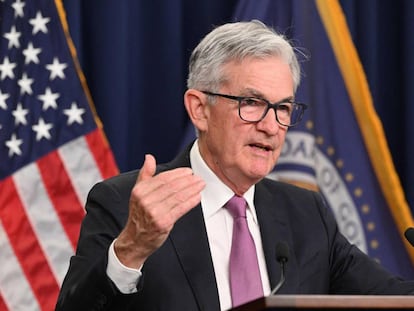The world’s richest accumulated 45.6% of global wealth in 2021, more than before the pandemic
The US and China added the most household wealth, while Africa, Europe, India and Latin America together accounted for just 11.1% of growth

Aggregate global wealth grew by 9.8% in 2021 to reach $463.6 trillion, according to a new report by the Swiss financial services provider Crédit Suisse. The United States and China added the most household wealth: the former contributed just over half of the total increase, while China contributed a quarter. Africa, Europe, India and Latin America, meanwhile, together accounted for just 11.1% of global wealth growth in 2021.
The richest 1% on the planet accumulated 45.6% of global wealth in 2021, a rise of 1.7% from 2019, the year before the Covid-19 pandemic. And the Global Wealth Report, now into its 13th edition, also predicted that this small group will continue to grow: the number of millionaires will reach 87 million and the number of ultra-high-net-worth individuals (those with a net fortune of over $50 million) will reach 385,000 in the next five years. At the bottom of the pyramid were those with capital of less than $10,000 in 2021 and who represented 53% of the world’s population.
The two most thriving economies in 2021 were the US and China, both with a growth rate of around 15% each. At the bottom was Europe, which grew only 1.5% last year, although it accumulated the second largest mass of wealth behind the US and ahead of China. In the next five years, the report predicted that middle-income countries will be the primary drivers of global wealth increases, producing 42% of global growth.
As for the distribution of wealth, the report noted that global inequality has decreased this century, due to the accelerated growth of emerging markets. This assumption is supported by the fact that the segment of individuals with wealth of $10,000 to $100,000 has experienced the biggest growth since the early 2000s, rising from 504 million to 1.8 billion individuals.
Credit Suisse’s assessment called 2021 a good year for household finances thanks to interest rate cuts and other policies by central banks to address the fallout from the pandemic. For 2022, the report is being more cautious as the war in Ukraine, inflation and the rise in interest rates could slow down household growth in the short term.
Tu suscripción se está usando en otro dispositivo
¿Quieres añadir otro usuario a tu suscripción?
Si continúas leyendo en este dispositivo, no se podrá leer en el otro.
FlechaTu suscripción se está usando en otro dispositivo y solo puedes acceder a EL PAÍS desde un dispositivo a la vez.
Si quieres compartir tu cuenta, cambia tu suscripción a la modalidad Premium, así podrás añadir otro usuario. Cada uno accederá con su propia cuenta de email, lo que os permitirá personalizar vuestra experiencia en EL PAÍS.
¿Tienes una suscripción de empresa? Accede aquí para contratar más cuentas.
En el caso de no saber quién está usando tu cuenta, te recomendamos cambiar tu contraseña aquí.
Si decides continuar compartiendo tu cuenta, este mensaje se mostrará en tu dispositivo y en el de la otra persona que está usando tu cuenta de forma indefinida, afectando a tu experiencia de lectura. Puedes consultar aquí los términos y condiciones de la suscripción digital.
More information
Últimas noticias
Welcome to the post-religion era: The idea of Christianity as the absolute truth has become obsolete
‘I thought you would like it’: The risky sexual practice popularized by TV shows and TikTok
The digitalization of tourism: ‘They promise experiences and gave us the worst possible one’
Mexican peso defies uncertainty with forecasts of a new period of stability in 2026
Most viewed
- Sinaloa Cartel war is taking its toll on Los Chapitos
- Reinhard Genzel, Nobel laureate in physics: ‘One-minute videos will never give you the truth’
- Oona Chaplin: ‘I told James Cameron that I was living in a treehouse and starting a permaculture project with a friend’
- Why the price of coffee has skyrocketed: from Brazilian plantations to specialty coffee houses
- Silver prices are going crazy: This is what’s fueling the rally










































